Local History Features
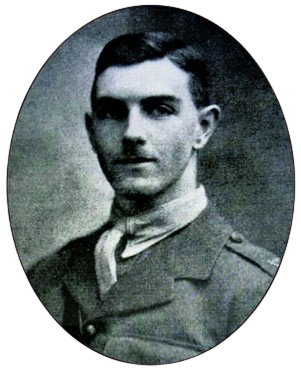
William Ewart Cecil White of Lloyds Bank, Amesbury
By Bill Dunn
Employed at Lloyds Bank, Amesbury Second Lieutenant William White was twenty years of age and with the London Regiment (City of London Rifles) 6th Battalion when he was killed in action on the 27th August 1918 in the ‘100 days’ that were vital to the allied victory that was to come in the November. In early August 1918 his battalion joined with other forces for a successful attack on Malard Wood, that unlike other actions, was an enveloping action rather than a frontal attack.
The action was so successful that the battalion were granted Battle Honours by the King, and this action is emblazoned on the Battalion’s flag for all to see. Then at Marincourt on 27th to 28th August, in what was described as an ‘action of movement’ against a determined enemy, his battalion was further engaged in battle, and it was in this action that he probably lost his life. He no doubt contributed towards the battalion’s Knick name of ‘The Cast Iron Sixth’.
He was the son of Mary J. White of 165, Union Street, Plymouth and the late Thomas White who had been an ironmonger and employed two people. William is buried at Bronfay Farm Military Cemetery, Bray-Sur-Somme (Grave Ref: 11.F.9). He is named in Lloyds Bank Great War list of employees who gave their lives in the Great War.
The Bourne Valley Historical Society By Terry Grace
By Terry Grace
The success and longevity of the BVHS was celebrated last year on its 75th anniversary, a tribute to the people of the area who throughout that period have and are continuing to work hard to ensure that the history of the Bourne Valley is recorded and made available locally. As such we are one of the oldest such groups in the area.
The Society started life in February 1948 when a meeting of 12 like-minded local people proposed the formation of the Bourne Valley Historical and Record Society and the group included some quite illustrious characters, including : John Musty, who later wrote on the lost settlements of Gomeldon and the archaeology of Clarendon and Dr. J F S Stone who had joined the Chemical Research Establishment as a chemist in 1925 but became renowned worldwide for his archaeological work.
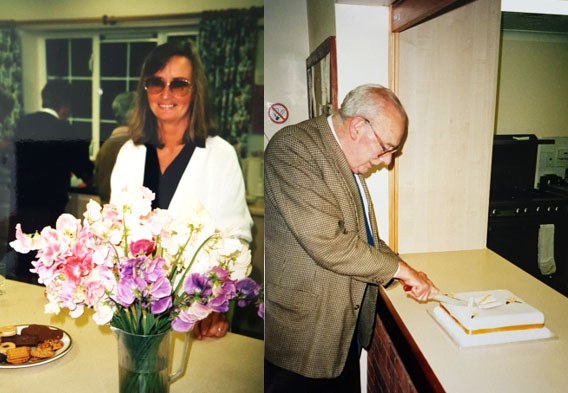
Also present were Mr. A. and Mr. C. (Charlie) Bray, who was a very knowledgeable local historian and went on to write the History of the Three Winterbournes.
Also in attendance were land owners Commander and Mrs. Skyrme and B. F. White together with a Mrs. Piggott, the Rev. and Mrs Blair and a Mrs Sassoon. This was in fact Mrs Hester Sassoon, wife of the famous War poet Siegfried Sassoon. She was at that time estranged from her husband and living in the Grange to be near her mother Lady Gatty who was living in The Manor at Winterbourne Dauntsey.
The initial aim of the society was to collect information about the history of the area, which was defined as being the Bourne Valley between Boscombe and Ford. Five of these original members; Charlie Bray, Mr. J Judd, Dr J.F.S.Stone, Mr J.W.G.Musty and Commander Skyrme all engaged in original research of the area and collection of documents, their work contributing to the majority of the records held by the society.
Tragedy struck in 1959 when, on his way to a BVHS meeting, Charlie Bray was knocked off his bicycle and killed. Charlie, who was the keeper of most of the records died intestate. As a result, the treasury confiscated all his possessions including his vast library and the archives of the society.
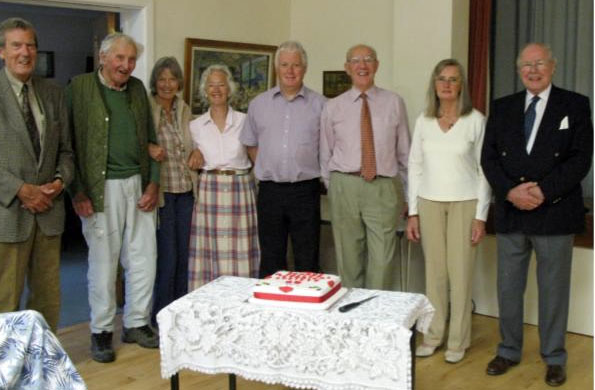
Mr Judd succeeded Charlie as Hon. Secretary and with much effort and some years, managed to rescue the society’s archives from the Treasury Solicitor.
There are many more anecdotes and facts about the society, too numerous to mention here, but basically, the society continued with periods in which it sometimes struggled to survive and others where it flourished. The contributions both large and small of the members are what made the society the success it is today, but a few people should be mentioned as being the stalwarts of the society in more recent years. In 1988 Mrs Maureen Atkinson came to the rescue as the new secretary of the society and thanks to her monthly newsletter the number of meetings and members started to grow. Maureen continues to be the backbone of the society alongside all her other commitments to the Winterbournes. As archivist, Angela Armstrong recently took on the gargantuan task of digitizing the complete archive. Angela who had little experience of this type of work has managed to produce a most well-organized and accessible database, which she runs extremely efficiently and which is open to all members for reference.
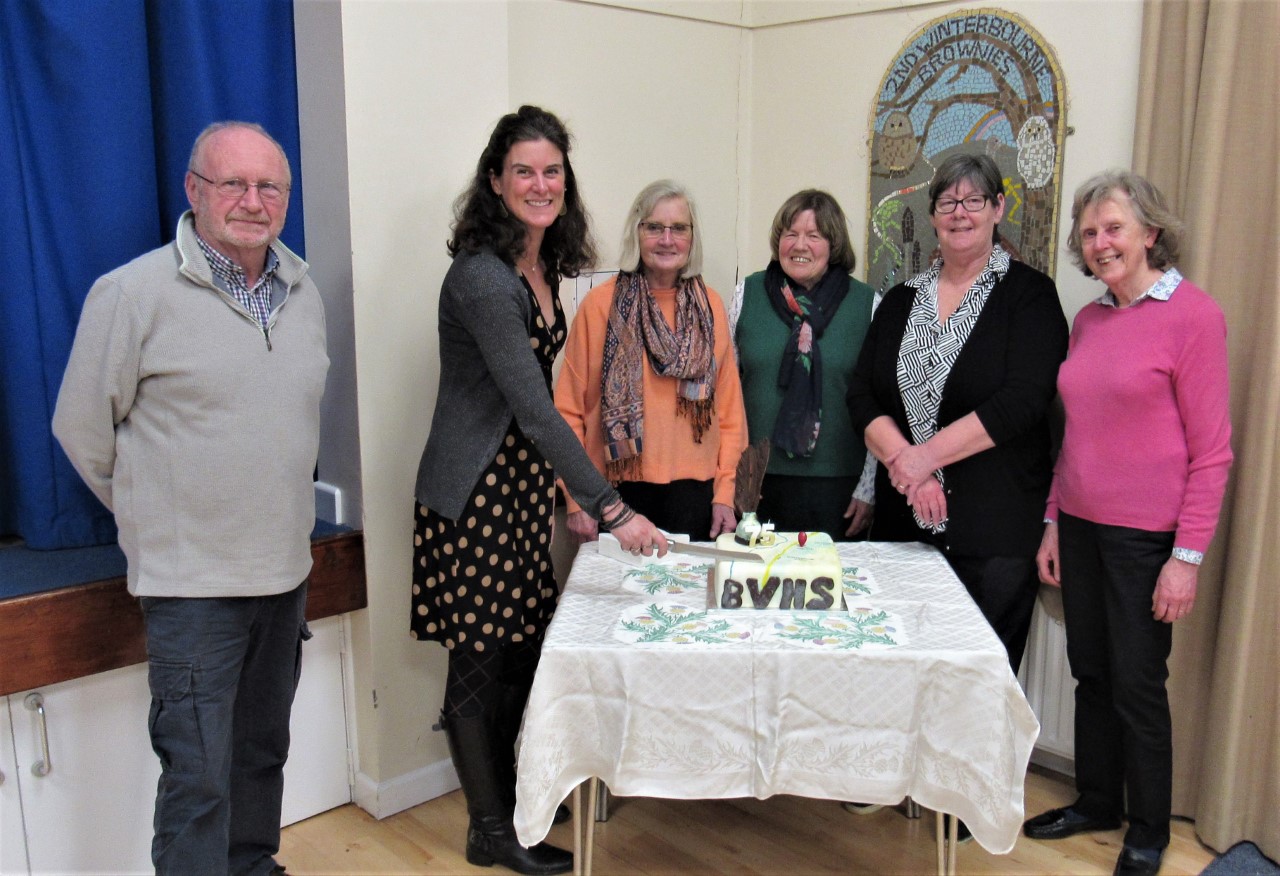
One other person who also merits acknowledgment is Dr Keith Norris who was also the archivist for a considerable time. Keith’s research into the history of the area is extensive and some of the most interesting material in the archive to my mind.
All meetings are at the Glebe Hall, Winterbourne Earls, Salisbury, SP46HA, except for August and December held monthly on the third Thursday of each month at 7:30 pm.
Contact & Website
It is my happy task to report that the society is going from strength to strength, with many new members joining this year. And although our membership is increasing, we are always keen to welcome new members, so why not come along to one of our regular talks? The society is a very friendly group and the topics for our talks are wide-ranging and not just about the Bourne Valley. In addition, several outings a year are organized in the local area.
Berwick St James
Berwick St James is a village and civil parish on the River Till in Wiltshire, England, about 7 miles (11 km) northwest of Salisbury, on the southern edge of Salisbury Plain. The parish includes the hamlet of Asserton. At the 2001 census the parish had a population of 185, reducing to 142 at the 2011 census.
The village High Street is the 83083 road which follows the river: south to Stapleford and the A36 Warminster-Salisbury road, and north to Winterbourne Stoke and the A303 trunk road, which cuts across the north-west of the parish.
History
Yarnbury Castle, an Iron Age hilfort, is partly within the parish. In the Domesday Book of 1086, estates at Berwick and Asserton were part of Winterbourne Stoke; by the 12th century the village had its present name. Stapleford Castle, a medieval ringwork castle, was just south of the parish at Stapleford. In 1377, Berwick St. James had 80 poll-tax payers and there were 27 at Asserton.
Berwick St James manor was held by the Chaworth family from the late 11th century, and was brought to the earls of Lancaster after Maud Chaworth (1282-1322) married Henry, a grandson of Henry Ill who became 3rd Earl of Lancaster. The manor passed to the Crown in 1399 when Lancaster's Henry Bolingbroke was declared Henry lV. The Wiltshire Victoria Country History traces the later owners.
Manor Farmhouse, on the village High Street, is late 16th century; Berwick House, to the west of the High Street, is early 19th century.
In the 1920S the High Street was part of the A360 Devizes-Salisbury road, which followed the Bourne valley. Sometime before 1958 the main road was redirected onto higher ground further east.
Assserton
In medieval times, Asserton was a village or hamlet with its own church or chapel, on the east bank of the river, opposite Berwick. In the 14th and 15th centuries it was a separate tithing. In 1557 Asserton manor was granted to James Basset, a courtier to Queen Mary. Asserton House was built in the late 18th century and rebuilt early in the 19th.
Lake Down Aerodrome
Between 1917 and 1919, downland in the east of the parish on both sides of the A360 was the site of Lake Down Aerodrome, one of several Training Depot Stations created in the area to support the rapid expansion of the Royal Flying Corps. An extension of the Amesbury and Military Camp Light Railway connected the site to Larkhill Camp, further north. The airfield's six hangars and other buildings were removed and the railway was dismantled, but a water tower, engine shed and workshop survive.
Parish Church
There was a church in the mid 12th century, and by C.1191 it was dedicated to St James. It was appropriated in 1406 or 1407 by Mottisfont Priory (Hampshire). The flint and limestone building, described by Orbach as an "endearing church of disparate parts", was designated as Grade 1 listed in 1960.
Its oldest feature is the Norman (12th-century) north doorway, flanked by columns, with shallow decoration to the lintel and chevron carving in the arch. The tympanum has undecorated blocks, as if some painted or carved decoration is missing.
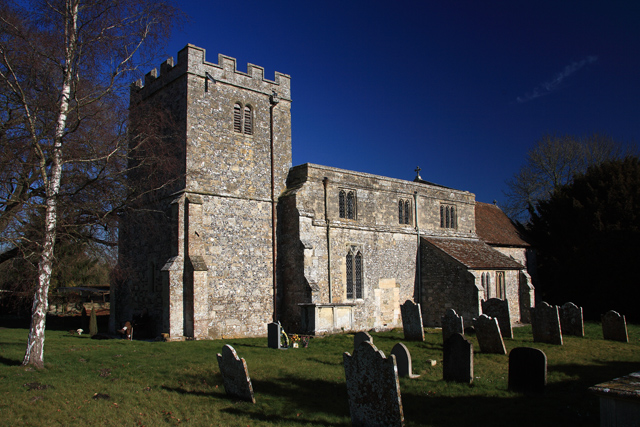
The chancel with its lancet windows is mid-13th century, although the chancel arch and tower arch are probably a century later. The early north chapel was rebuilt in the 15th century, and around then or in the next century, work to the nave included the addition of a clerestory and a south porch, and the rebuilding of the south chapel. The squat west towerfell C.1 655 and was rebuilt in 1670, in a plain style similar to Stapleford. The church was restored in 1871; the chancel roof was replaced and the three-bay nave roof, probably 16th century, was restored.
The font, a plain cylindrical bowl, is 12th century. The 15th century stone pulpit is a rare survival. The four bells are from the 17th and 18th centuries and are said to be unringable. The benefice was united with that of Stapleford in 1924, and in 1992 the parish became part of the Lower Wylye and Till Valley benefice, which today covers eight rural churches.
Any images and text in Posts on this web page are submitted by the Contributor and may be subject to copyright laws.
Reproduction is prohibited without written consent from the respective copyright owner.